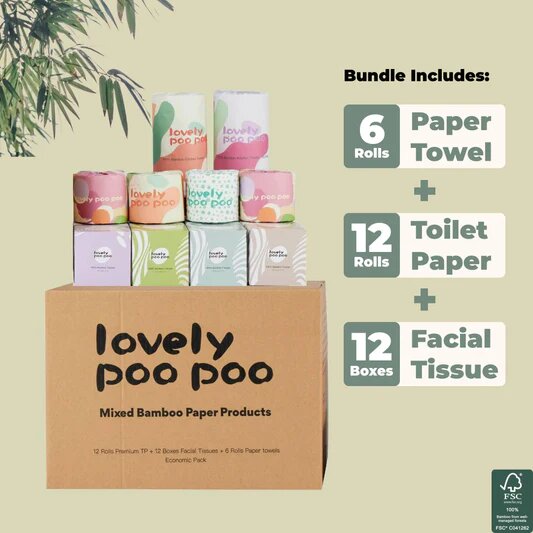As the world grapples with environmental challenges, consumers are becoming increasingly conscious of their choices. Sustainable toilet paper has emerged as a practical and impactful way to contribute to a greener future. In this article, we explore the concept of sustainable toilet paper, its significance in the realm of eco-friendly products, and how it empowers individuals to be active participants in environmental conservation.
Understanding Sustainable Toilet Paper
Recycled Content: At the heart of sustainable toilet paper lies the use of recycled content. Unlike conventional options that rely on virgin pulp from trees, sustainable toilet paper is made from post-consumer recycled paper, reducing the demand for fresh resources and promoting a circular economy.
Responsibly Sourced Materials: Sustainable toilet paper brands prioritize responsibly sourced materials, such as bamboo or certified sustainably managed forests. These materials are renewable, ensuring that the production process does not contribute to deforestation or habitat destruction.
The Environmental Impact of Sustainable Toilet Paper
Reducing Deforestation: Deforestation is a pressing concern for global biodiversity and climate change. By opting for sustainable toilet paper, we help mitigate deforestation and its cascading effects on wildlife, soil erosion, and carbon dioxide emissions.
Energy and Water Conservation: The production of conventional toilet paper consumes vast amounts of energy and water. In contrast, sustainable toilet paper manufacturing processes are designed to be more efficient, minimizing resource usage and environmental impact.
Sustainable Packaging and Plastic-Free Initiatives
Minimal Packaging: Sustainable toilet paper brands often adopt minimal packaging, using recycled and recyclable materials. By reducing excessive packaging, we curb waste generation and contribute to a cleaner environment.
Plastic-Free Initiatives: Some sustainable toilet paper options go the extra mile by being completely plastic-free. These initiatives prevent plastic pollution and its detrimental effects on marine life and ecosystems.
Consumer Choices and the Power of Demand
Educating Consumers: Promoting sustainable toilet paper usage involves educating consumers about the environmental impact of their choices. Increased awareness empowers individuals to make informed decisions that align with their values.
Driving Industry Change: As demand for sustainable toilet paper grows, it encourages the industry to embrace eco-friendly practices on a larger scale. Consumers hold the power to drive change, influencing manufacturers to adopt sustainable alternatives and reduce their carbon footprint.
Conclusion
In a world striving for sustainability, every choice we make counts. Sustainable toilet paper offers a simple yet impactful way to take an active role in environmental conservation. By choosing recycled and responsibly sourced options, we reduce deforestation, conserve energy and water, and curtail waste generation. Additionally, consumer demand for sustainable practices motivates the industry to adapt and embrace more eco-friendly solutions. Let us embrace the power of sustainable toilet paper and embark on a journey towards a greener, more sustainable future for all.









































